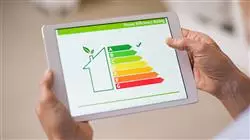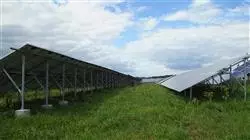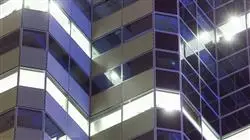University certificate
The world's largest faculty of engineering”
Introduction to the Program
Engineering professionals must continue their training during their careers to adapt to new developments in the field"

The Postgraduate diploma in Lighting and Control Systems addresses the complete range of issues involved in this field, both in the residential and tertiary sectors. Its study has a clear advantage over other programs that focus on specific blocks, which prevents the student from knowing the interrelationship with other areas included in the multidisciplinary field of Lighting and Control Systems.
Throughout these months of specialization, you will learn how to develop and apply efficient lighting systems, as well as how to use control systems that allow energy-saving. You will also gain the necessary knowledge in the application of the principles of lighting technology and its properties, differentiating the aspects that contribute to energy-saving.
With the completion and passing of the assessments of this educational program, the student will obtain a solid knowledge of Lighting and Control Systems.
As it is a 100% online Postgraduate diploma, the student is not constrained by fixed timetables or the need to move to another physical location, but can access the contents at any time of the day, balancing their professional or personal life with their academic life.
Do not miss the opportunity to take with us this Postgraduate diploma in Lighting and Control Systems. It's the perfect opportunity to advance your career"
This Postgraduate diploma in Lighting and Control Systems contains the most complete and up-to-date academic program on the market. The most important features include:
- The development of practical case presented by experts in Lighting and Control Systems
- The graphic, schematic, and practical contents with which they are created provide scientific and practical information on the disciplines that are essential for professional development
- Practical exercises where the self-assessment process can be carried out to improve learning
- Special emphasis on innovative methodologies in Lighting and Control Systems
- Theoretical lessons, questions to the expert, debate forums on controversial topics, and individual reflection work
- Content that is accessible from any fixed or portable device with an Internet connection
This Postgraduate diploma is the best investment you can make when selecting a refresher program to update your knowledge in Lighting and Control Systems”
Its teaching staff includes professionals belonging to the field of construction, who bring to this program the experience of their work, as well as recognized specialists from leading companies and prestigious universities.
The multimedia content, developed with the latest educational technology, will provide the professional with situated and contextual learning, i.e., a simulated environment that will provide immersive learning programmed to train in real situations.
This program is designed around Problem-Based Learning, whereby the professional must try to solve the different professional practice situations that arise throughout the program. For this purpose, the professional will be assisted by an innovative interactive video system created by renowned and experienced experts in Lighting and Control Systems.
This program comes with the best teaching material, providing you with a contextual approach that will facilitate your learning"

This 100% online Postgraduate diploma will allow you to balance your studies with your professional work while expanding your knowledge in this field"
Syllabus
The structure of the contents has been designed by the best professionals in the sector, with extensive experience and recognized prestige in the profession.

We have the most complete and up-to-date program on the market. We strive for excellence and for you to achieve it too"
Module 1. Standards and Regulations
1.1. Regulation
1.1.1. Justification
1.1.2. Key Notes
1.1.3. Responsible Agencies and Authorities
1.2. National and International Standards
1.2.1. ISO Standards
1.2.2. EN Standards
1.2.3. UNE Standards
1.3. Building Construction Sustainability Certificates
1.3.1. The Need for Certificates
1.3.2. Certification Procedures
1.3.3. BREEAM, LEED, Green and WELL
1.3.4. PassiveHaus
1.4. Standards
1.4.1. Industry Foundation Classes (IFC)
1.4.2. Building Information Model (BIM)
1.5. European Directives
1.5.1. Directive 2002/ 91
1.5.2. Directive 2010/ 31
1.5.3. Directive 2012/ 27
1.5.4. Directive 2018/ 844
1.6. Technical Building Code (CTE)
1.6.1. Applying CTE
1.6.2. CTE Basic Documents
1.6.3. CTE Support Documents
1.6.4. Accepted Documents
1.7. Building Energy Certification Procedure
1.7.1. R.D. 235/2013
1.7.2. Technical Conditions
1.7.3. Energy Efficiency Label
1.8. Regulation of Thermal Installations in Buildings (RITE)
1.8.1. Objectives
1.8.2. Administration Conditions
1.8.3. Execution Conditions
1.8.4. Maintenance and Inspections
1.8.5. Technical Guides
1.9. Low Voltage Electrotechnical Regulations (REBT)
1.9.1. Key Application Aspects
1.9.2. Internal Installations
1.9.3. Installations in Publicly Concurred Premises
1.9.4. External Installations
1.9.5. Domotic Installations
1.10. Related Standards. Search Engines
1.10.1. Government Agencies
1.10.2. Business Entities and Associations
Module 2. Lighting installations
2.1. Light Sources
2.1.1. Lighting Technology
2.1.1.1. Properties of Light
2.1.1.2. Photometry
2.1.1.3. Photometric Measurements
2.1.1.4. Luminaires
2.1.1.5. Auxiliary Electrical Equipment
2.1.2. Traditional Light Sources
2.1.2.1. Incandescent and Halogen
2.1.2.2. High- and Low-Pressure Sodium Vapor
2.1.2.3. High- and Low-Pressure Mercury Steam
2.1.2.4. Other Technologies: Induction, Xenon
2.2. LED Technology
2.2.1. Principle of Operation
2.2.2. Electrical Characteristics
2.2.3. Advantages and Disadvantages
2.2.4. LED Luminaires. Optical
2.2.5. Auxiliary Equipment. Driver
2.3. Interior Lighting Requirements
2.3.1. Standards and Regulations
2.3.2. Lighting Project
2.3.3. Quality Criteria
2.4. Outdoor Lighting Requirements
2.4.1. Standards and Regulations
2.4.2. Lighting Project
2.4.3. Quality Criteria
2.5. Lighting Calculations with Calculation Software. DIALux
2.5.1. Features
2.5.2. Menus
2.5.3. Project Design
2.5.4. Obtaining and Interpreting Results
2.6. Lighting Calculations with Calculation Software. EVO
2.6.1. Features
2.6.2. Advantages and Disadvantages
2.6.3. Menus
2.6.4. Project Design
2.6.5. Obtaining and Interpreting Results
2.7. Energy Efficiency in Lighting
2.7.1. Standards and Regulations
2.7.2. Energy Efficiency Improvement Measures
2.7.3. Integration of Natural Light
2.8. Biodynamic Lighting
2.8.1. Light Pollution
2.8.2. Circadian Rhythms
2.8.3. Harmful Effects
2.9. Calculation of Interior Lighting Projects
2.9.1. Residential Buildings
2.9.2. Business Buildings
2.9.3. Educational Centers
2.9.4. Hospitals
2.9.5. Public Buildings
2.9.6. Industries
2.9.7. Commercial and Exhibition Spaces
2.10. Calculation of Outdoor Lighting Projects
2.10.1. Street and Road Lighting
2.10.2. Facades
2.10.3. Signs and Illuminated Signs
Module 3. Control Installations
3.1. Home Automation
3.1.1. State-of-the-Art
3.1.2. Standards and Regulations
3.1.3. Equipment
3.1.4. Services
3.1.5. Networks
3.2. Inmotics
3.2.1. Characteristics and Regulations
3.2.2. Building Automation and Control Technologies and Systems
3.2.3. Technical Building Management for Energy Efficiency
3.3. Telemanagement
3.3.1. System Determination
3.3.2. Key Elements
3.3.3. Monitoring Software
3.4. Smart Home
3.4.1. Features
3.4.2. Equipment
3.5. The Internet of Things IoT
3.5.1. Technological Monitoring
3.5.2. Standards
3.5.3. Equipment
3.5.4. Services
3.5.5. Networks
3.6. Telecommunications Installations
3.6.1. Key Infrastructure
3.6.2. Television
3.6.3. Radio
3.6.4. Telephony
3.7. KNX, DALI Protocols
3.7.1. Standardization
3.7.2. Applications
3.7.3. Equipment
3.7.4. Design and Configuration
3.8. IP Networks WiFi
3.8.1. Standards
3.8.2. Features
3.8.3. Design and Configuration
3.9. Bluetooth
3.9.1. Standards
3.9.2. Design and Configuration
3.9.3. Features
3.10. Future Technologies
3.10.1. Zigbee
3.10.2. Programming and Configuration. Python
3.10.3. Big Data

This program will allow you to advance in your career comfortably"
Postgraduate Diploma in Lighting and Control Systems
.
In today's world, lighting plays a fundamental role in creating functional and aesthetically appealing spaces. In addition, energy efficiency has become a priority to reduce consumption and promote sustainability. That is why at TECH Global University we present our Postgraduate Diploma program in Lighting and Control Systems, designed to make you an expert in this constantly evolving field. Would you like to learn from the comfort of your own home? Our online classes offer you the flexibility to study at your own pace, without compromising the quality of your education. You will be able to access the content at any time and from anywhere, making the most of your time and adapting it to your responsibilities and schedule. In our postgraduate program you will immerse yourself in the fascinating world of lighting and control systems, exploring the latest trends and technologies in the field. You'll learn about the selection and design of efficient luminaires, the application of sensors and smart control systems, and the integration of lighting with the Internet of Things (IoT) to create connected and energy-efficient spaces.
Light the way to energy efficiency.
The advanced postgraduate degree provides you with the necessary tools to become a highly skilled professional in the design and implementation of efficient lighting solutions. You will be able to apply your knowledge in different contexts, such as commercial, residential, industrial and urban buildings, contributing to the reduction of energy consumption and environmental care. There is no better opportunity to expand your advanced knowledge with all the novelties offered by our innovative Relearning system. Join us at TECH Global University and take a step into the future of efficient lighting. Enroll now in our Postgraduate Diploma program in Lighting and Control Systems and ignite your professional career!







